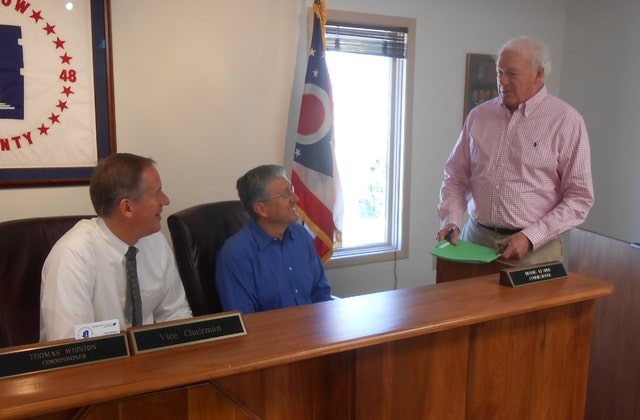Still reeling from the effects of the housing market collapse of 2008, foreclosed properties pose a problem for municipalities throughout Morrow County, as well as much of the state.
Abandoned homes have been a county-wide issue for years, but became a more widespread problem when foreclosures reached crisis proportions during the recession.
To deal with blighted properties, officials have established the Land Re-utilization Corporation of Morrow County, commonly referred to as a land bank.
The newly formed quasi-government entity will give villages and townships throughout Morrow another means of combating vacant and foreclosed properties.
Morrow County Treasurer, Tom Griffith said that the purpose of a land bank is to identify properties that are non-productive and give them a productive use.
They acquire land that is abandoned, vacant and tax-foreclosed, and clear the title to take ownership.
Buildings on the acquired property may need to be demolished or repaired before the property can be rehabilitated for use as a home, park, green space or business.
The first step in organizing the Morrow County Land Bank was to form a board directors to have it approved by the county commissioners. After approval, Morrow became one of 31 counties in the state to have an established land bank.
The board is independent and governed by two county commissioners, the county treasurer, a representative of the largest town in the county and one other board member as stipulated by the state.
The Morrow County land bank consists of commissioners Dennis Leader and Tom Whiston, treasurer, Tom Griffith, Mount Gilead Village Administrator, Dan Rogers and First Federal Bank Asst. Vice President, Steve Keen.
“This is a great program with great potential,” Keen said. “This can be really good for our neighborhoods and community when we help some of these distressed properties.”
He stated the group has had an organizational meeting and Griffith and Leader attended a regional land bank meeting.
Keen explained that funding for land banks comes from federal Troubled Asset Relief Program or TARP funds. The money can only be used by the county for reimbursement on construction and demolition projects. There is a $25,000 cap on individual projects, so funds are primarily used for the demolition of dilapidated or abandoned buildings and the rehabilitation and clearing of properties.
The Morrow County land bank can begin projects with money from the delinquent tax and assessment collection fund (DTAC). Those funds are accumulated from penalties on delinquent taxes. They can then apply for TARP funds as reimbursement.
Griffith said one of the most valuable possibilities of the land bank is that it can expedite transactions. The organization can manage properties until rehabilitation can begin; otherwise, the county must go through a longer process to get rid of abandoned and foreclosed properties.
Both Griffith and Keen stressed that they want the Morrow County land bank projects to proceed deliberately. They will be doing things step-by-step and are in a learning process with the first projects. Griffith hopes to begin with the first properties by the end of this year.
Rogers said this is a great opportunity for Morrow County and the villages to get rid of some of the abandoned and run down properties. He said that credit should go to Tom Griffith for his work in organizing and going forward with the land bank.






